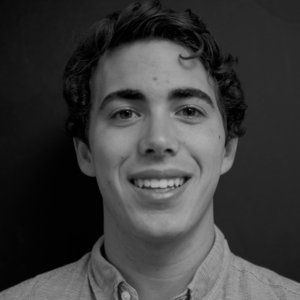Dunn: Trump administration must aim to ease country’s toxic, divided political climate
Kyle Smith | Contributing Photographer
Elliot Carlson, a sophomore at the State University of New York College of Environmental Science and Forestry, protested President Donald Trump at the National Mall on Friday following his inauguration.
The national consciousness has been predictably consumed by the political spectrum for months now. But in the wake of President Donald Trump’s inauguration, the focus on politics has become something of an obsession led by two starkly opposing forces: The stunned masses attempting to make sense of Trump’s victory through women’s marches across the globe, and the legion of his supporters eager to declare their moral superiority.
Now, only days removed from the inauguration, the political climate seems to have reached a boiling point. News outlets, desperate to gain an upper hand over one another, have resorted to questionable journalistic tactics. The White House has countered these perceived slights with “alternative facts” that seek to discredit the mainstream media. College students, many who broke out in protest after the election, continue to voice their objections to the Trump administration.
The conversation has shifted from “who will win the presidency?” to “is Trump a legitimate president?” And it’s unclear where this leaves us at a time when the country is incredibly divided, particularly when this level of political obsession is palatable on college campuses. College students have historically skewed left, according to the Harvard Political Review, and were predictably opposed to Trump’s candidacy, which served as a veritable antithesis to the liberal agenda.
Yet Trump has not displayed any regard for unity, and continues to stoop to new lows, belittling his opposition any chance he gets. At this point, it won’t be possible to make progress when politics has seeped into so many aspects of daily life if Trump continues to divide and conquer.
Even though Trump has yet to show an inclination to unite the American people, Syracuse University’s College Democrats have been working to organize protests and discussions for anti-Trump students and marginalized peoples. These spaces can help those on campus who feel unsafe in a Trump administration to voice their disagreements, said Sarah Epelman, vice president of the organization.
“Through serious policy-driven events and initiatives, we want to work to better the campus, city and county,” said Epelman, who added that many students feel “disenfranchised” by the Democratic Party and struggle with the negative connotation of being associated with the party.
Part of that negative connotation stems from an onslaught of denigration from the right, many of whom have taken to characterizing college students as entitled millennial snowflakes who aren’t “real Americans.” As a rhetorical strategy, this argument holds little merit, but as a tactic to discredit the youthful opposition to Trump, it has been fairly effective. Nevertheless, colleges continue to be hubs for protests and anti-Trump sentiment.
But beyond college students desperately seeking change, the media is one sector that can actually influence change, if it’d only change its tune. Much of the political divisiveness in the country can be attributed to the outgrowth of large media outlets vying for attention in an oversaturated market.
Competing 24-hour news networks faced with the unenviable task of filling an infinite amount of airtime have developed a reliance on highly partisan, often alienating pundits to attract viewership. Print media has an arguably more difficult undertaking, since it needs to supply an endless stream of articles to keep up with a person’s Facebook refreshes.
So the result isn’t necessarily bad journalism, but rather too much of it. When every speech and press conference is broken down into the most minute detail, it can be spun any way that fits a given narrative. This ability to twist the truth leaves us to wonder: Was it the scorched earth tactics of both candidates that divided our nation, or that our bubbles were so encapsulating that we were simply blind to the division?
No matter the cause of this heavy partisanship, there’s only one man who can ease the tension created by the increasingly toxic political atmosphere: the president.
Ryan Dunn is a freshman history major. His column appears weekly. He can be reached at rarozenb@syr.edu.
Published on January 25, 2017 at 12:09 am






